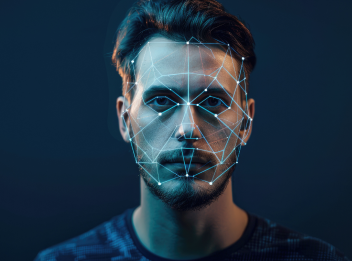Advancements in artificial intelligence (AI) have given rise to deepfake technology— AI-generated media that can create convincing fake images, videos, and audio, to the point that it’s almost impossible to determine what’s real and what’s fake.
While deepfakes can be used for entertainment, they pose serious threats to corporate security. For Canadian companies, understanding and mitigating the threat of deepfakes is critical in protecting sensitive media, maintaining trust, and preventing financial losses.
Understanding Deepfakes and How They Threaten Corporate Security
Deepfakes are synthetic media created using deep learning algorithms to replicate a person’s likeness or voice. One key example is cybercriminals who impersonate executives and use audio or video to pretend to be company leaders. They often will ask an employee to make a purchase to send to an address, transfer money to specific accounts, or share confidential information that can lead to compromised systems or stolen data.
Some cybercriminals will spread misinformation about a company, which leads to reputational damage, or those who will mimic voices or facial features to circumvent biometric security systems.
In all cases, cybercriminals will try to use AI and learning algorithms to sound as convincing as possible, making it a challenge for employees and leadership to recognize.
How Can You Recognize Deepfake Attacks?
Businesses have an added responsibility for being vigilant and recognizing deepfake attacks. From a leadership level down to an employee level, your team should be able to identify potential deepfake threats.
Here are key indicators to help you detect deepfake threats:
- Unnatural Facial Movements: Watch for subtle mismatches between speech and facial expressions.
- Audio Irregularities: Listen for inconsistencies in the speaker’s tone, cadence, or unusual background noise.
- Unverified Requests: Be cautious of urgent or unusual requests for sensitive information or financial transfers.
5 Ways to Protect Your Business from Deepfake Threats
To defend against deepfake-related attacks, businesses should implement these 5 key security measures to lower the threat levels.
1. Strengthen Verification Processes
Deepfakes make it easier for cybercriminals to pose as executives or employees, so businesses must reinforce their verification methods. Multi-factor authentication (MFA) should be mandatory for accessing sensitive accounts, and any financial or data-related requests should be verified using a secondary communication channel, such as a direct phone call or in-person confirmation.
2. Train Employees to Identify Deepfakes
Education is the first line of defense. Employees should receive regular training on how to spot deepfake videos, manipulated audio, and AI-generated messages. Encourage staff to verify any unexpected or suspicious requests and report potential deepfake threats immediately.
3. Implement AI-Based Detection Tools
As deepfake technology advances, businesses can leverage AI-driven security tools to detect manipulated media. These tools analyze video, audio, and text for inconsistencies that indicate tampering, helping companies identify fraudulent attempts before they cause harm.
4. Establish Secure Communication Protocols
To reduce the risk of deepfake-enabled fraud, businesses should establish strict communication policies for sensitive transactions and internal discussions. Using encrypted messaging apps and secure video conferencing platforms can help prevent unauthorized interception and impersonation.
5. Partner with a Managed IT Provider
Cyber threats are constantly evolving, and deepfakes are no exception. Partnering with a managed IT provider like PartnerIT ensures your business stays ahead of emerging threats by implementing the latest cybersecurity measures, monitoring suspicious activity, and responding quickly to potential deepfake attacks.
Why Deepfake Prevention is Critical for Business Continuity
Investing in deepfake detection and prevention safeguards not only protects your data but also your business’s credibility. Proactive measures mean:
Stronger Security: Enhanced verification processes reduce the risk of financial fraud and data breaches.
Reputation Protection: Quick detection and mitigation of deepfake threats help maintain public trust.
Operational Continuity: Secure communication protocols and monitoring systems ensure business operations remain undisrupted.
Stay Ahead of Deepfake Threats
Deepfake technology will continue to evolve, making it essential for businesses to stay ahead of these emerging risks. By combining employee education, advanced detection systems, and expert cybersecurity support, your business can effectively combat the growing threat of deepfakes.
Join forces with PartnerIT to safeguard your business from advanced cyber threats and ensure your corporate security stays ahead of the curve.



